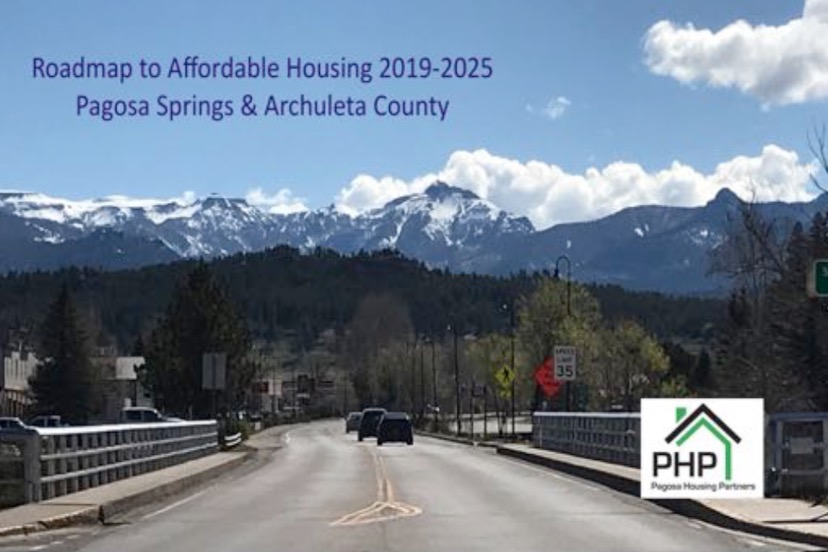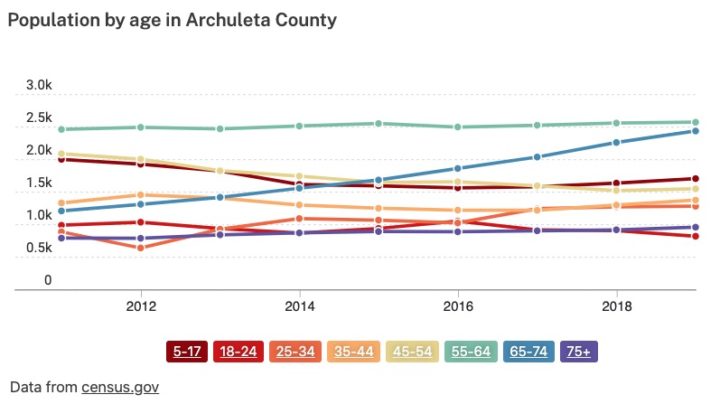Yesterday in Part One, we touched briefly on handful of closely related issues, including a couple of initiatives being considered by the Town government.
We touched on the complex problem of homelessness, and on a Town Council discussion about Tiny Homes On Wheels, and another Town Council discussion about a possible affordable housing project at the corner of Apache and South 5th Street, near Yamaguchi Park.
The Daily Post also published, yesterday, a real estate summary from realtor Lee Riley, which relates to the housing situation as well. Mr. Riley, one of the leading real estate agents in Pagosa, wrote:
Buyers are hungry and looking for something to buy with not much left on the shelves. There’s a lot of pent-up demand. As a Realtor, we have plenty of buyers sitting on the sidelines waiting and hoping for new properties to hit the market. The difference from a year ago is increased prices and multiple offers, typically with escalation clauses. I recently sent out three mailers begging for new listings. A year ago, I had 16 homes and condos available. Currently, I only have one.
The housing crisis gets framed in many different ways. A decent overall summary of Pagosa’s particular situation can be found in the 2018 ‘Roadmap to Affordable Housing’ created by local non-profit Pagosa Housing Partners. You can download that 54-page report here.
Of the 47 specific actions recommended by the PHP staff and their consultant in 2018, only a handful or so have been initiated as of 2021. But the Town Council presentations on Tuesday evening suggest that the Town leadership is ready to take some big steps forward this year.
First, some background issues — to create a foundation, so to speak.
The historic downtown of Pagosa Springs — roughly one square mile centered on the hot springs that became an incorporated Town in 1891 — grew up to serve a working community of ranchers and logging companies. The population hit a high point of about 1,591 in 1940, when the most accessible areas of surrounding old-growth pine forest were being harvested. By that point, about half of the 1,100 platted downtown parcels had seen homes or businesses built on them.
Things didn’t change much for downtown Pagosa between 1940 and 2000, in terms of population. The US Census counted 1,591 residents in the year 2000… the exact same number as they’d counted in 1940.
But the community had nevertheless changed radically — outside the town limits. Vast areas of the unincorporated county had been converted from ranch properties into suburban subdivisions. The total Archuleta County population in 1940 had been about 3,800 (about twice the population of the town); by 2000 it had grown to roughly 9,900 (about six times the town’s population.) The fabulous growth — outside the town — continued through about 2006.
Curiously enough, this rather fabulous growth of population had taken place without Archuleta County producing anything of material value, other than houses.
The ranching industry had declined between 1940 and 2000, as ranches were turned into subdivisions or bought up by wealthy, non-ranching individuals. Most all the sawmills had shut down by the late 1970s, as the timber industry became more regulated and faced growing international competition.
The only thing Pagosa Springs and Archuleta County was producing, materially, was housing. This rather fabulous population growth — and the real estate industry and construction industry that made it possible — was fueled by retirees bringing their pensions and savings accounts to Pagosa Springs, and by a burgeoning tourism industry funded largely by residents of the oil-and-gas economies of Texas and Oklahoma, and the retirement economies of Arizona and other southwestern states.
The housing industries — real estate, construction, property management, and so on — continued on an exhilarating upward path until about 2006, when the housing bubble began to deflate in Archuleta County. The bubble had served some people very well; the price of a new or existing home had doubled since 1990; the price for a vacant lot and more than doubled. Things still looked very bright in 2006, if you had a job in the tourism industry or the housing industry, or with the numerous local government agencies.
Then the Great Recession arrived, and the community’s primary item of “created material wealth” — housing construction — came pretty much to a complete halt. Realtors and home builders left town, looking for work elsewhere.
By 2010, the population of Archuleta County had actually declined, for the first time since… well, no one really remembers when the population had last declined.
Then, as the community came out of the Great Recession, the population growth slowly resumed. But it was a weird kind of growth.
If you are a data geek, you might find a new Google project — DataCommons.org — an interesting place to spend a few minutes.
I found the following graph there this morning, showing the growth of various age groups between 2011 and 2019.
The most well-represented age group in Archuleta County is “55-64”. That demographic has stayed fairly steady over the past decade, at about 2,500 members.
The most radical element on the graph is the group aged “65-74”. That group, shown by the blue line rising steeply from left to right, has more than doubled in the past decade, from about 1,100 to about 2,500.
The three demographic groups that have declined noticeably are “5-17”, “18-24”, and “45-54”.
Archuleta County has grown noticeably older, over the past decade.
As a result, we have the current housing market…
Buyers are hungry and looking for something to buy with not much left on the shelves. There’s a lot of pent-up demand. As a Realtor, we have plenty of buyers sitting on the sidelines waiting and hoping for new properties to hit the market. The difference from a year ago is increased prices and multiple offers, typically with escalation clauses. I recently sent out three mailers begging for new listings. A year ago, I had 16 homes and condos available. Currently, I only have one.
If we were part of the Town government, and we recognized this radical demographic transformation taking place in our community, how would we approach the ongoing housing crisis?


